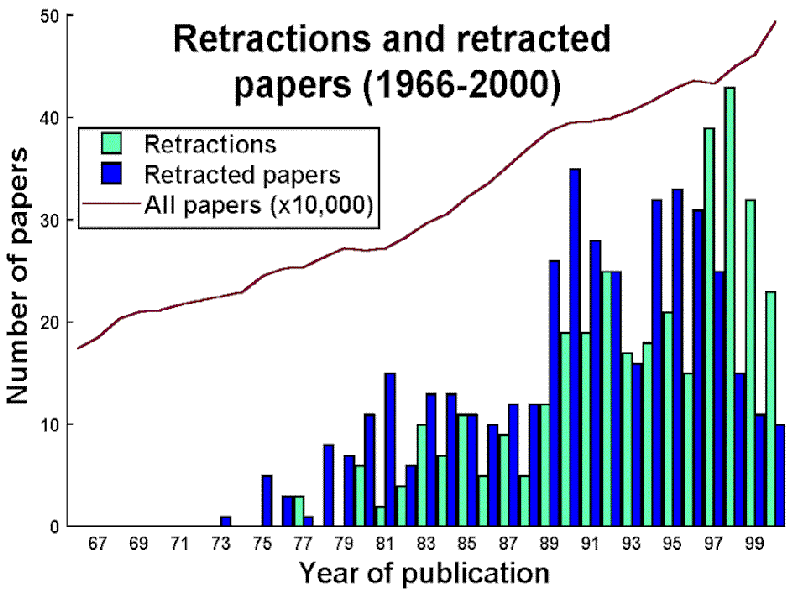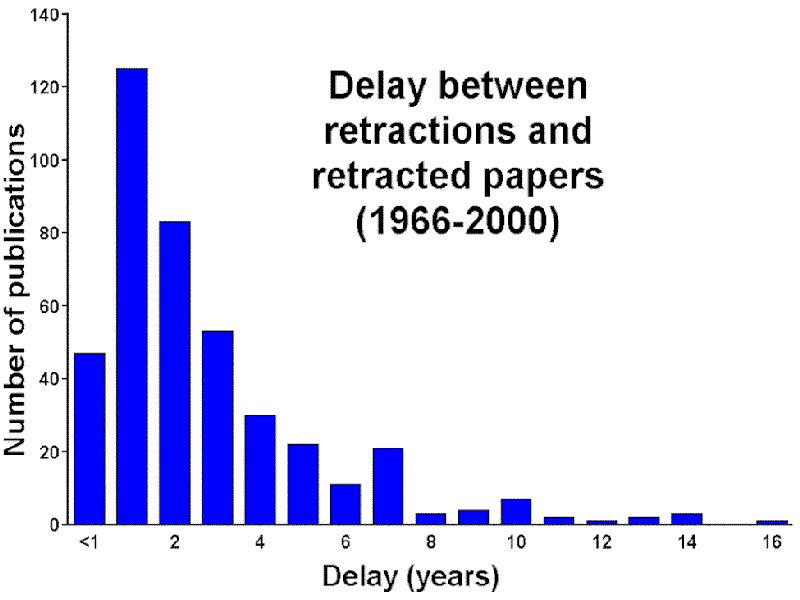Retractions and retracted papers were searched for in several MEDLINE(r) databases, including the following freely available on the Internet: Entrez-PubMed, Infotrieve Online- MEDLINEŽ and MEDLINE on BioMedNet.
Cumulative data are shown in Figure 1. A total of 415 papers (mean 11.85/year) were retracted in 345 retraction notices (mean 9.85/year). No retractions were published until 1977, when 3 appeared; this figure increased up to 43 in 1998 and then decreased down to 23 in 2000. This increase was, at least in part, paralleled by a corresponding rise in the total number of publications. All the retractions except 12 (96.52%) and as many as 394 (94.93%) of the retracted papers were published in English.
As shown in Figure 2, more than three fifths of the papers were retracted within 2 years, and nearly three quarters within 3 years after publication. The mean delay between retracted papers and retractions was 2.74 years, with a range from less than 1 year to 16 years. This confirms and extends previous observations about the delay in publication of retraction notices (1-4). It is of interest to note that in a recent survey of biostatisticians a majority of the participants admitted to know about fraudulent projects and different forms of fraud (5). In this context, it is of interest to note that a comprehensive approach to the problem of research misconduct has been advocated (5). The Office of Research Integrity (ORI, DHHS), in collaboration with the National Institute of Neurological Disorders and Stroke and the National Institute of Nursing Research published in May 2001 an announcement for a program of research on research integrity. In addition, the ORI has recently issued a program announcement for a contract for a study on the incidence of research misconduct in biomedical research in order to establish a database suitable as a benchmark for measuring change in subsequent studies in five-year intervals. In conclusion, these results substantially confirm previous findings about retractions (1-4) and support the need for more and better attention to the problem of scientific fraud and error, in order to determine causes, find remedies, and define prevention strategies.
Acknowledgment
|

